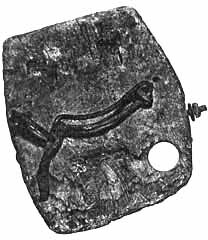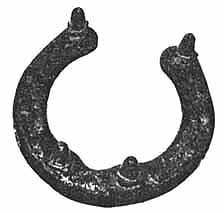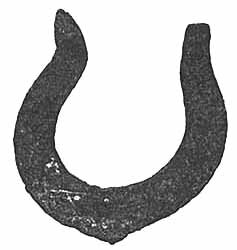
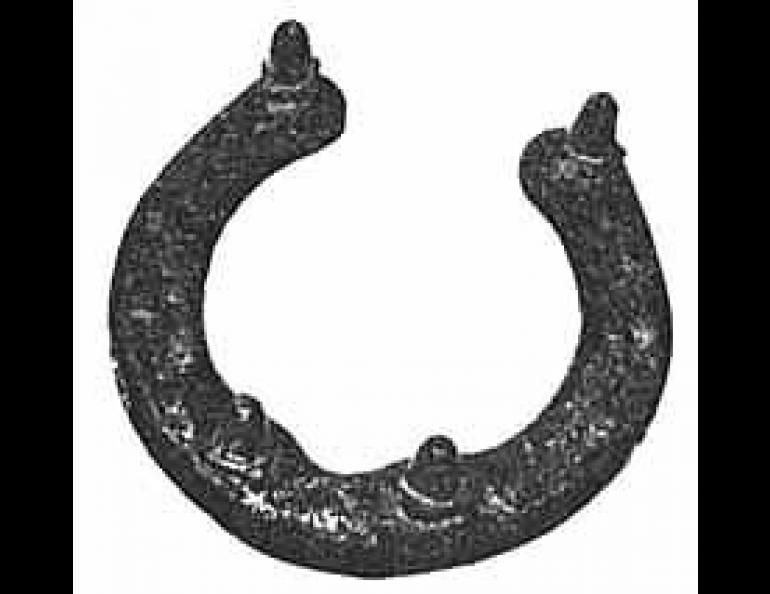
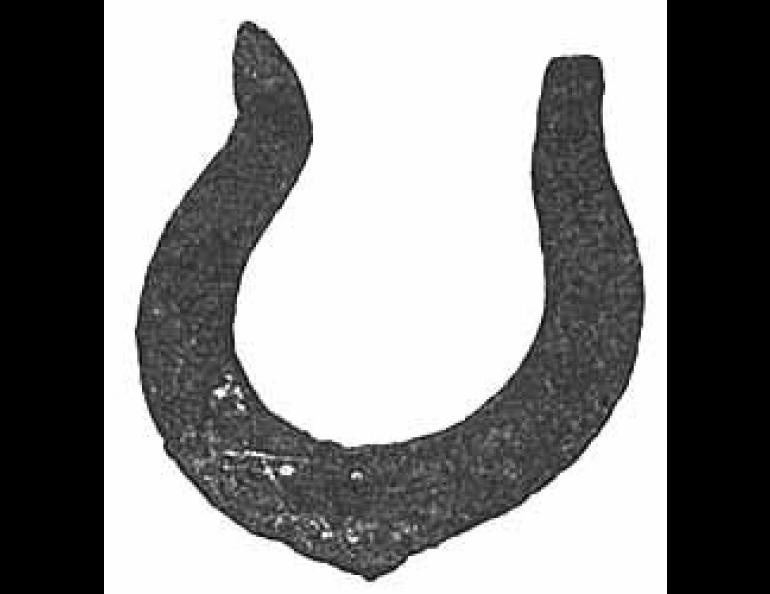
Fancy Footwear For Freighting
This past spring, we were repairing the ditches that breakup had left in our driveway, when the plow turned over a rusty object that had the general configuration of a horseshoe, but was unlike any horseshoe that I had ever seen.
In the first place, the "shoe" measured over 7 inches in width and almost 9 inches from heel to toe. I couldn't imagine a horse big enough to wear it, except perhaps as a galosh. Further, it had odd-shaped protuberances sticking down from around the bottom unlike anything that I remember from my days as a farm boy in Nevada.
My inexperience in such matters began to show when I took the object to the university experimental farm, where I was told that it was indeed a horseshoe, and that the protuberances were intended to give the horse traction in muddy or slippery footing, for much the same reason that we utilize snow treads or tire studs on our car.
For further information, I was directed to several local experts on the use of horses in Alaska, including Jim Jennings, Dorothy Wilde, and Dave Nester. The following is only a small part of what I learned.
The horseshoe that I found in our driveway near Ester was worn by a large draft horse, probably a Belgian, Clydesdale or Percheron (Dorothy Wilde showed me a shoe even larger than the one I found). Most likely, the horse was being used for mining or freighting purposes around the peak of mining activity in the area from 1906 to 1908. During the early part of this century, the overwhelming majority of freight into the Interior was hauled by horses, although to most people it is the dog team that comes most readily to mind when speaking of early transportation in the far north. While the dog teams were invaluable in their primary role as an express delivery service, the horses bore the brunt of the heavy labor.
I also learned that the protuberances on the shoe that I found are called "caulks," or "calks" (a term which has degenerated in some areas to "corks"). On the side of the shoe away from the horse's centerline, the caulk is triangular and tapered inward from the tip toward the center to prevent sideways slippage, while the inward caulk is either square in cross section or tapered from the tip of the shoe at the rear toward the front to give better forward traction. At the very front of the shoe is a sharp triangular cross-piece known as the "toe-cutter."
Freighting shoes such as these were not the only contrivances designed to give horses better traction. There were also ice shoes, which had knobs extending from the bottom with beads of "borium" welded onto the tips. Although the derivation of the word is Obscure, Dave Nester tells me that borium is merely carbide steel.
Probably the ugliest example of foot finery that I came across was one shown to me by Dorothy Wilde and deservedly called a "clog." Its obvious purpose was to distribute the weight of a horse and prevent it from sinking to its knees in muddy conditions, much as a snowshoe supports the weight of a man. It is merely a board with indentations carved in it which match the caulks on a horse's shoe, and a metal strap which passes over the hoof and holds it into place.
One cannot help but marvel that nothing succeeds like success. Despite their apparent ungainliness, such devices must have worked, because I am told that many of them are still used today.

